Penguins are flightless, aquatic birds that have feathers, two legs, and a four-chambered heart. Over 65 million years ago penguins could actually fly, and flew over areas of Antarctica and New Zealand.
However, evolutionary biologists think that shifting plate tectonics forced penguins to adapt to an increasingly water-filled environment by evolving flipper-like wings that allowed them to swim underwater and catch food.
13 Characteristics of Penguins
Characteristics can be physical or cognitive features of an animal species that are unique to that species. This list gives 13 examples of characteristics of penguins.
1. Penguins “Toboggan” Across Frozen Tundra
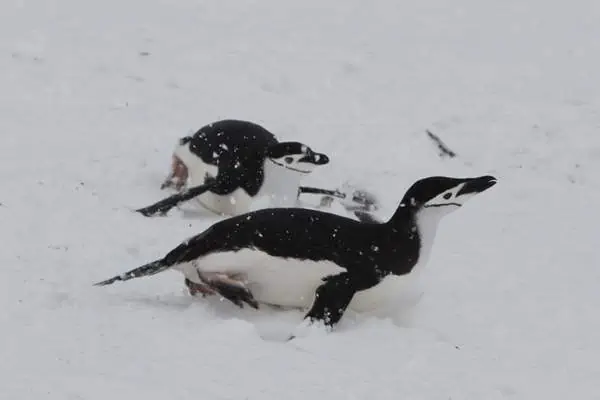
When you see a penguin suddenly flop over on its belly and slide across ice and snow, they are “tobogganing”. Penguins toboggan because it conserves both thermal and metabolic energy when traveling long distances. They will waddle on their two feet for short distances and hop when maneuvering rocky terrain.
2. Penguins Have Feathers
Immature penguins are covered in downy feathers until they reach adulthood and molt. A penguin’s new feathers bear black and white colors indicative of most Antarctic penguins. Broad, stiff, and short, adult penguin feathers are dense enough to prevent icy water from touching their skin when a penguin dive-bombs for food.
3. They Take Turns Getting Warm
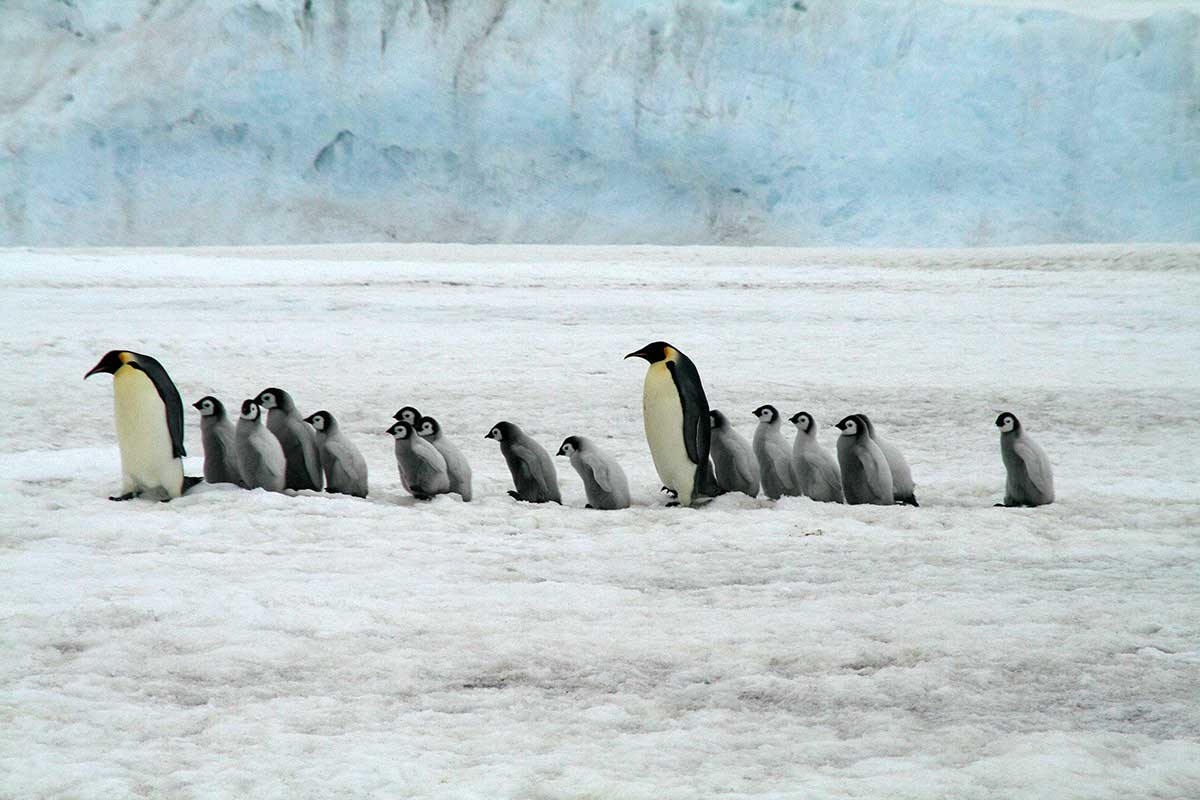
With penguins exposed to Antarctic temperatures plunging as low as -50 degrees Fahrenheit, they’ve come up with a novel method for staying as warm as possible. Several dozen penguins belonging to the same group will huddle together to create body heat. Then, the penguins in the middle of the group will allow other penguins to move to the center where it is the warmest.
4. Penguins Spend Much More Time In The Water Than on Land
Although swimming in the Antarctic Ocean is not a human’s idea of a great vacation, penguins spend nearly 75 percent of their time in the water. They have no choice because that’s where the food is!
5. Penguins Don’t Chew Their Food
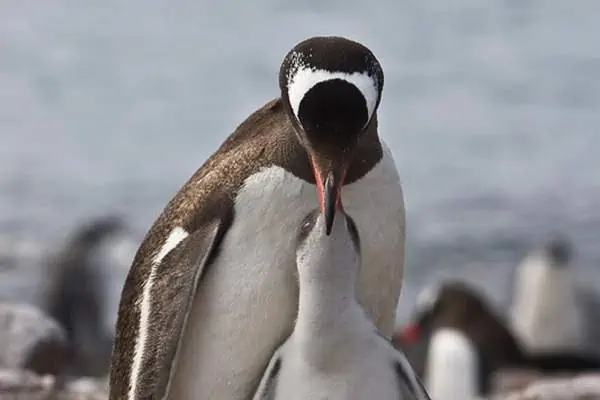
Like other birds, penguins don’t have to worry about cavities since they have no teeth. They do have notches on the bottom and top of their mouths to help them swallow fish and crustaceans in one, big gulp.
6. Penguins Share a Characteristic with Whales
Penguins are insulated by several inches of blubber under the thick layer of feathers covering their bodies. Like whale blubber, penguin blubber is simply body fat that protects them against harsh, Antarctic winters. Whale blubber insulates whales when they dive deep into colder waters.
7. Penguins Have Black and White Feathers for a Good Reason
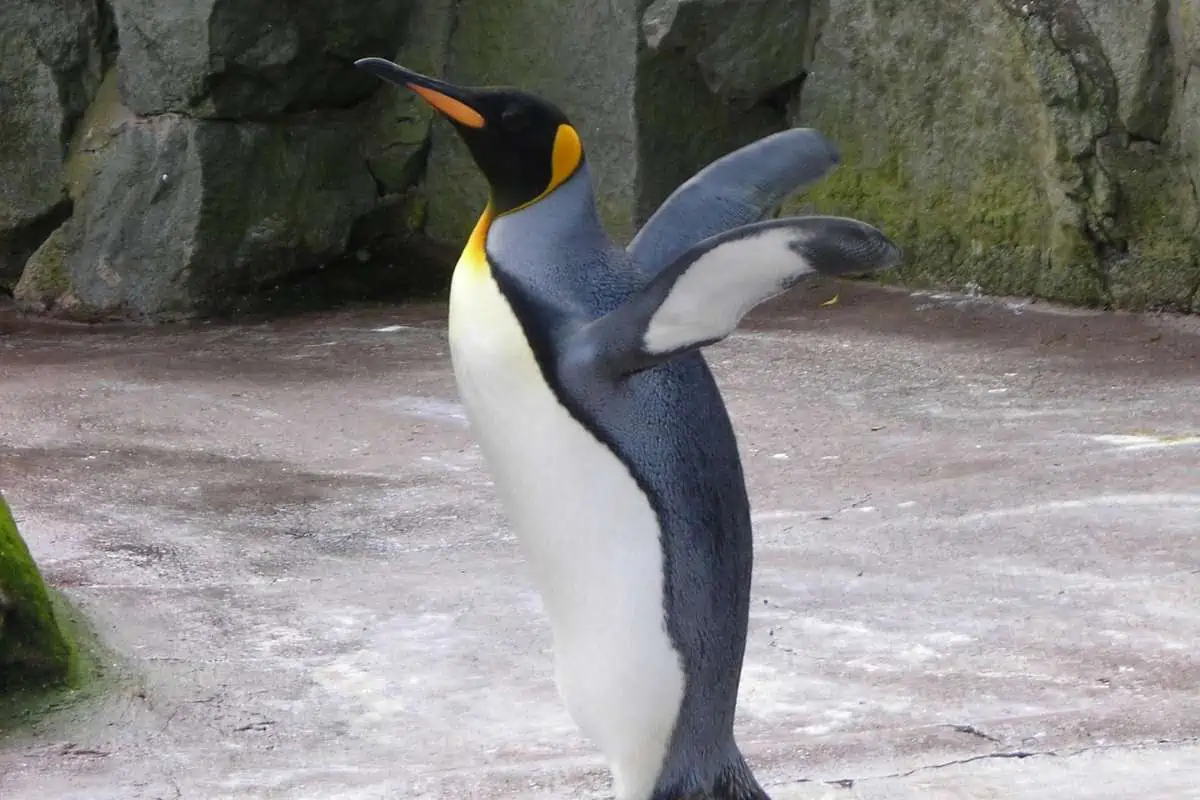
Penguins may look like they are dressed for a night on the town, but those black and white feathers evolved to help them survive. When on land, a penguin’s white feathers provide camouflage from flying predators. When swimming in the ocean, their black feathers also offer camouflage protection from both flying and aquatic predators.
8. Penguins Drink Salt Water–But They Don’t Have To
Penguins stay hydrated mostly from the fluids of creatures they eat. When food is scarce, they can resort to drinking salt water and not suffer from consuming excess salt. Penguins have salt glands connected to their bills by tiny ducts that filter out salt from ocean water.
9. Penguins are Preeners
If you see a penguin smoothing its beak over its feathers, it’s spreading a special oil secreted by a gland at the base of its tail. This oil repels water and bacteria to keep their feathers healthy and thick. Since they would freeze to death without their feathers, penguins devote three to four hours a day “preening” themselves.
10. Penguins Do Not Have Gills
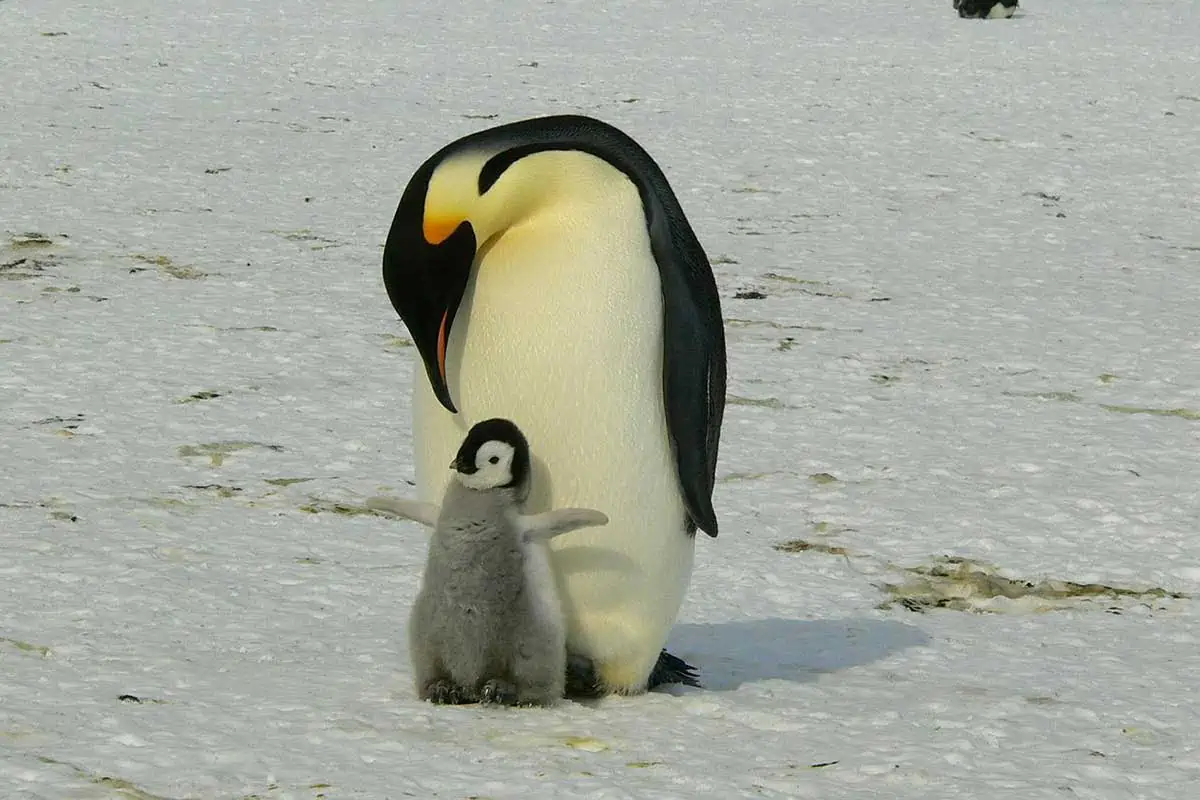
Most penguin species can stay underwater for about 15 to 20 minutes before they have to return to the surface for air. The Emperor penguin–the largest of all penguin species–has been observed remaining underwater for nearly 30 minutes. Penguins have lungs and air sacs like birds do.
11. A Penguin Has Never Met a Stranger (Human Stranger, That Is)
Penguins are not afraid of humans and will readily approach you like you’re an old friend. Penguins don’t have to worry about terrestrial predators, but they do keep a sharp eye out for flying predators, especially when there are eggs and young chicks within the group. Contrary to popular belief, polar bears do not co-exist with penguins.
12. Penguins Have Ears–You Just Can’t See Them
Covered by feathers and located on either side of their heads, these ear “holes” allow penguins to interpret the vocalizations of other penguins. Penguins don’t have an outside portion to their ears because this extra body part would slow their streamlined bodies down while swimming underwater.
13. Penguins are Noisy
Penguins make a variety of noises to communicate with group members, from squawking and hawking to honking and growling. The chirping of a baby penguin sounds similar to a bird chirp.
Traits and Adaptions
A trait is something that is passed on genetically. For example, humans pass on dominant or recessive traits to their children. An example of a dominant trait would be brown eyes or righthandedness.
Recessive traits are less commonly passed on from parents to their children. Examples of recessive traits include left-handedness or blue eyes. Inherited diseases like cystic fibrosis or sickle cell anemia are recessive traits.
The evolutionary term “adaption” refers to the ability of an animal to adapt to a changing environment. Penguins lost their ability to fly by developing fin-like appendages so they could survive by catching aquatic food.
On the other hand, many terrestrial animals that used to swim in the oceans adapted to their ancient shrinking waterworld by evolving limbs. Today’s “tetrapods”–birds, reptiles, and amphibians–were actually fish over 400 million years ago that survived by adapting to climate change and dwindling oceans.





